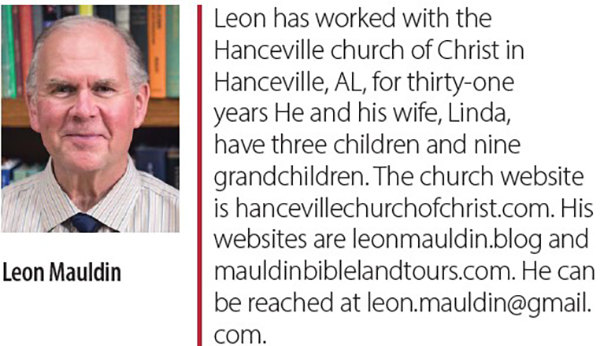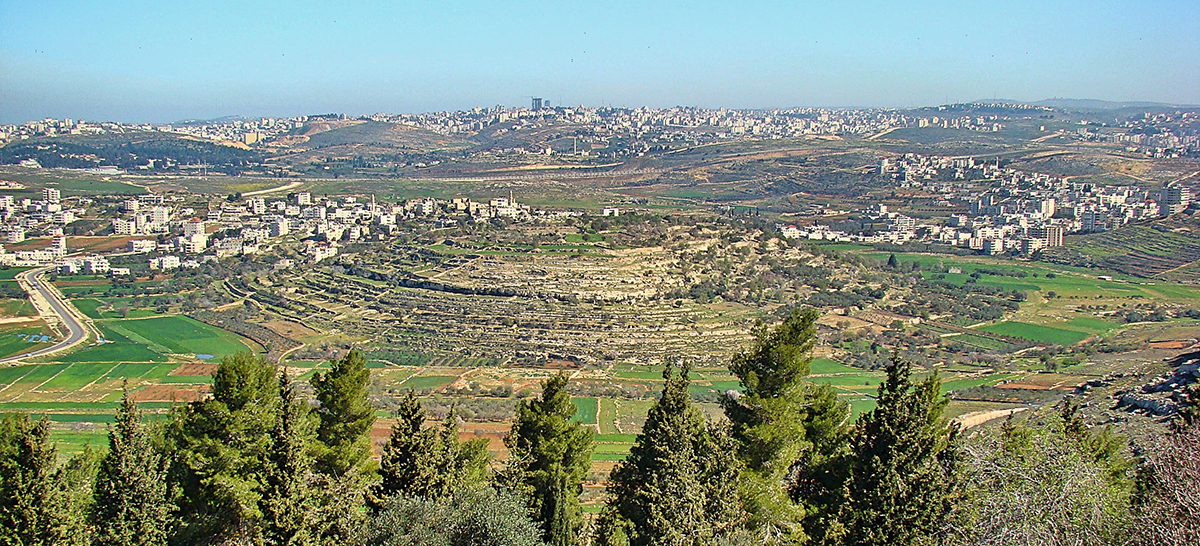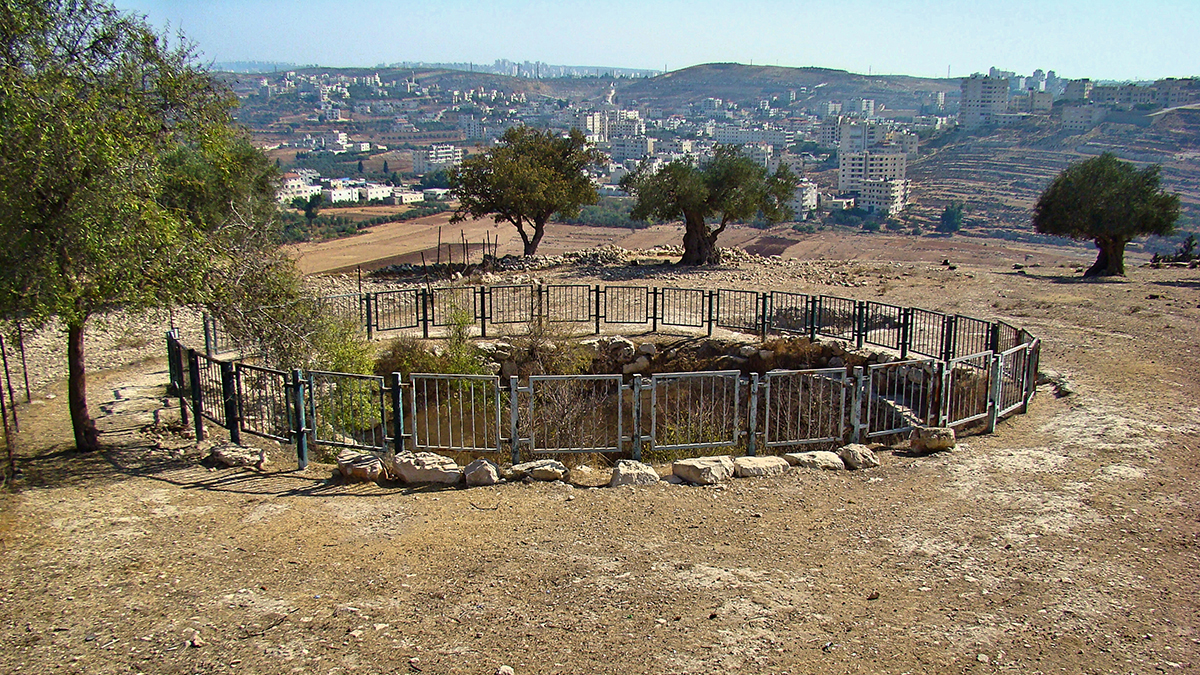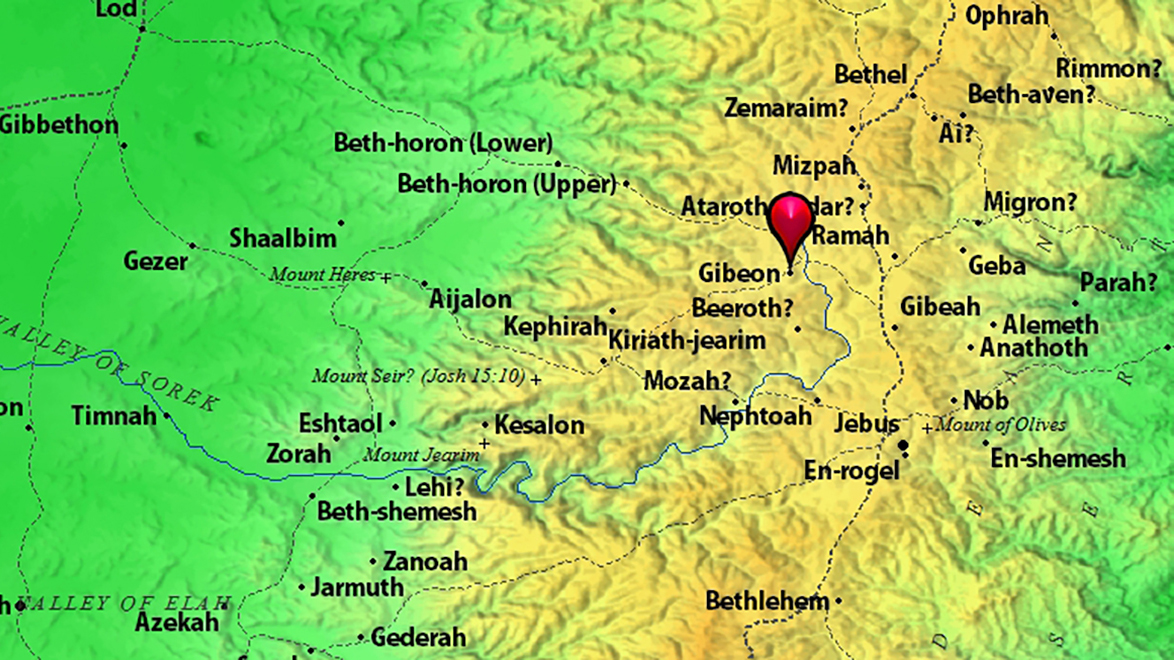ARCHAEOLOGY: The Pool of Gibeon

The Pool of Gibeon was the site of sad and needless loss of life! Once again, archaeology illustrates and illuminates the principles from the biblical text.
Gibeon was a Canaanite city, first mentioned in connection with the conquest of Canaan. As background, in the preparatory warfare instructions, although provisions were made for making peace with a city some distance from Canaan, the Canaanites within the promised land were to be destroyed. God permitted no covenant with them (Deut. 20:10-20). Somehow being aware of this, the Gibeonites approached Joshua’s camp at Gilgal and pretended to have traveled from a great distance away. They brought old dry, moldy bread and wore worn-out clothes, and said the bread was fresh when they left, and their garments had worn out along the way. The text says, “Then the men of Israel took some of their provisions, but they did not ask counsel of the Lord” (Josh 9:14). Later the Israelites found out they had been deceived. They honored their covenant with the Gibeonites but made them woodcutters and water carriers for the house of God (v. 23).
See the map locating Gibeon. Our photo shows the tel of Gibeon, which is the Arab village of El-Jib (in the West Bank); it was taken from Nabi Samwil.
There are several biblical references to the site of Gibeon. Because the Gibeonites had made a treaty with Israel, a coalition of kings to the south, led by the king of the Jebusites (ancient Jerusalem), attacked. They sent to Joshua for help, and he responded, defeating these southern kings. Needing extra daylight to make the victory complete, Joshua prayed to the Lord, and the day was lengthened, giving the necessary time to defeat Israel’s enemies. “Sun, stand still over Gibeon; and Moon, in the Valley of Aijalon. So the sun stood still, and the moon stopped, Till the people had revenge upon their enemies” (Josh. 10:12-13).
After the conquest, when the land was distributed, Gibeon became part of the tribal territory of Benjamin (Josh. 18:25) and was subsequently designated as a Levitical city (Josh. 21:17). Later still, when the ark of the covenant was at Jerusalem, the tabernacle itself and the altar of burnt offering were at Gibeon (see 1 Chron. 16:37-40; 21:29). For this reason, the LORD appeared to Solomon here at Gibeon, promising him unsurpassed wisdom (2 Chron. 1:1-12). Of course, that arrangement at Gibeon would no longer be the case when Solomon built the temple.
In this article, we want to focus on an event that happened in the early reign of King David; in fact, it was when he was king only over the southern Kingdom of Judah, and Ishbosheth (Saul’s son) was the rival king over the northern tribes of Israel. Abner was commander of Ishbosheth’s army; Joab was the commander of David’s forces. Our text reads,
Joab son of Zeruiah and David’s men went out and met them at the pool of Gibeon. One group sat down on one side of the pool and one group on the other side. Then Abner said to Joab, “Let’s have some of the young men get up and fight hand to hand in front of us.” “All right, let them do it,” Joab said. So they stood up and were counted off— twelve men for Benjamin and Ish-Bosheth son of Saul, and twelve for David. Then each man grabbed his opponent by the head and thrust his dagger into his opponent’s side, and they fell down together. So that place in Gibeon was called Helkath Hazzurim. The battle that day was very fierce, and Abner and the men of Israel were defeated by David’s men (2 Sam. 2:13-17, NIV).
The photo of the Pool of Gibeon helps us visualize the site of this tragic event. From here, you see the territory of Benjamin; the view is northeast. The discovery of the ancient Pool of Gibeon is truly fascinating:
The discovery of a huge pool-like shaft at Gibeon in 1956 came as a complete surprise, both to the excavators (led by James B. Pritchard of the University of Pennsylvania), and to the local villagers. It had been completely sealed from view under tons of fill and debris for over two and one-half millennia.
When Pritchard and his colleagues began excavating the site, they were already inclined to identify it as ancient Gibeon, as Edward Robinson had proposed in 1838 based on his explorations of the area and the similarity of the modern name (el-Jib) to Gibeon. This identification was confirmed dramatically during the first season of Pritchard’s excavation with the discovery of storage jar handles inscribed with the name of Gibeon (Cole).
Bob Waldron writes, “The tournament turned into a bloody duel. Each man’s zeal to win and to make a good showing led him to extreme measures. Each man seized his fellow’s head and stabbed him with his sword. This brief but vicious action led to a full-scale battle” (1 and 2 Samuel, 635). A sad and needless loss of lives! Yet again, archaeology illustrates and illuminates the biblical text! 
Sources
Cole, Dan P. “How Water Tunnels Worked” (Biblical Archaeology Review [BAR] 6:2, March/April 1980). The BAS Library: Biblical Archaeology Society Online Archive. November 5, 2015. https://www.baslibrary.org/biblical-archaeology-review/6/2/1.
Waldron, Bob. Truth Commentaries: 1 and 2 Samuel. Edited by Mike Willis. Bowling Green, KY: Guardian of Truth Foundation, 2011.
by Leon Mauldin
Photos and Captions
Image-1: Tel of Gibeon from Nabi Samwil

Image-2: Pool of Gibeon

Image-3: Map of Gibeon

Author
Ads

